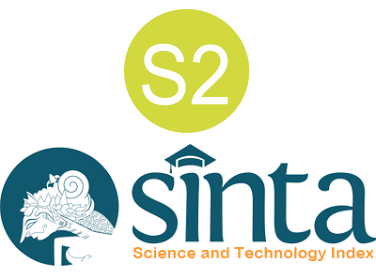Spiritualitas Tubuh sebagai Ekspresi Teologi Lokal melalui Pemujaan Dewa-Dewi dan Praktik Kebugaran dalam Rukmini Tattwa
DOI:
https://doi.org/10.37329/jpah.v9i3.4235Keywords:
Body Spirituality, Local Theology, Worship of Gods and Goddesses, Fitness Practices, Rukmini TattwaAbstract
The body in the Hindu Balinese tradition is not only understood as a biological entity, but also as a sacred space that reflects the relationship between humans and divine power. Rukmini Tattwa as one of the important texts contains teachings about the sanctity of the body, worship of Gods and Goddesses, and fitness practices combined with spiritual discipline as a path to union with God. This study aims to reveal how the spirituality of the body and fitness practices are expressed as part of local Hindu Balinese theology through a study of rukmini tattwa and the accompanying ritual practices. The method used is qualitative with an approach of religious text study, symbolic analysis, and theological interpretation. Data were obtained through literature study, participatory observation, visual documentation, and in-depth interviews with religious figures and spiritual practitioners who were selected purposively. The results of the study show four main findings, namely 1) the body is seen as a sacred vessel (sarira) that must be cared for, 2) local Gods and Goddesses play a role in guiding religious awareness, 3) fitness practices in the form of yoga and body care are part of spiritual teachings, 4) interpretation of local theology that interprets the body as a medium of devotion. In conclusion, body spirituality is a real expression of local theology that is manifested through the care and purification of the body as a spiritual path.
References
Adnyana, I. B. P. (2021). Kosmologi Hindu Dalam Teks Ganapati Tattwa. Satya Widya: Jurnal Studi Agama 4(1) 89-90.
Arimbawa, I., Juniartha, M., & Putra, I. (2020). Kesadaran Diri Menurut Tutur Jatiswara: Merajut Kembali Kerukunan Hidup Umat Beragama. Widya Genitri Jurnal Ilmiah Pendidikan Agama Dan Kebudayaan Hindu, 11(3), 147-166.
Bagus, I G. N. (1989). Religious Pratice in Bali. Denpasar: Universitas Udayana.
Bandem, I M. & Fredrik Eugène DeBoer. (1995). Kaja and Kelod: Balinese Spatial Orientation and Ritual Practice. Denpasar: Mudra.
Csordas, T. J. (1994). The body as representation and being in religious experience. In M. L. A. Petersen & W. S. Sax (Eds.), Anthropology and the study of religion: A critical approach. New York: Routledge.
Divayana, I. W. J. (2024). Nilai Pendidikan Agama Hindu Dalam Geguritan Kala Tattwa. JAPAM (Jurnal Pendidikan Agama), 4(2), 118-125.
Eiseman, F. B. (1990). Bali: Sekala and Niskala. Bali: Bali Media Publishing.
Jumadiah, S. (2007). Rukmini Tattwa Usadha Perawatan Tubuh. Denpasar: Yayasan Dharma Pura Denpasar.
Juniartha, M., Suputra, I., & Maitrya, N. (2024). Pengaruh Hatha Yoga Terhadap Kesehatan Mental Anak-Anak Anggota Sanggar Samirata. Jurnal Penelitian Agama Hindu, 8(1), 46-54.
Kamvysselis, M. I. K. (2023). Melukat: Exploring The Educational Significance Of Purity In Balinese Ritual Practices And Religious Leadership Development. Journal of Education and Learning, 12(5), 102.
Larosa, S. (2024). Membangun Teologi Lokal. TEVUNAH: Jurnal Teologi Dan Pendidikan Kristen, 2(2), 151-174.
Mahendra, F. (2023). Manusia yang Beradab Menurut Tri Kaya Parisudha. Pustaka : Jurnal Ilmu-Ilmu Budaya, 23(1), 20.
Mantra, I. B. (2018). Bhagawadgita: Alih Bahasa & Penjelasan. Denpasar: ESBE Buku
Maswinara, I W. (2005). Tri Angga, Tri Loka, dan Tri Pramana dalam Konsep Hindu Bali. Denpasar: Yayasan Dharma Acarya
Murdihastomo, A. (2019). Identifikasi Dewa-Dewi Agama Hindu-Buddha Sebagai Dewa Pelindung Pelayaran (Identification Of Hindu-Buddhist Gods And Goddesses As Patron Deities Of Seafaring). Naditira Widya, 13(2), 87-104.
Radhakrishnan, S. (1990). The Hindu View of Life. New York: Harper & Row.
Sena, I. G. M. W. (2021). The Concept Of Yoga In The Tattwa Jñana Script. Analisa: Journal of Social Science and Religion, 6(01), 17-32.
Sudarsana, I. K. and Andriyani, N. L. P. L. (2024). Membentuk Karakter Dan Kesadaran Lingkungan Melalui Pendidikan Agama Hindu. Jurnal Simki Pedagogia, 7(1), 228-242.
Suryadarma, I. G. P. (2011). Keanekaragaman Tumbuhan Bahan Kebugaran Dalam Naskah Lontar Rukmini Tatwa Masyarakat Bali. Biota: Jurnal Ilmiah Ilmu-Ilmu Hayati, 16(3), 290–300.
Teixeira, P. R. (2008). Theology of the Body in Hinduism: Embodiment, Sacramentality, and the Divine. Journal of Religious Studies, 42(4), 379-393.
Titib, I M. (1996). Veda dan Upanisad: Sumber Teologi Hindu. Surabaya: Paramita
Venkatesan, S. (2020). Object, Subject, Thing. American Ethnologist, 47(4), 447-460.
Werdiyasa, I. K. S. (2024). The Meaning And Function Of Rerajahan In The Religious Life Of The Balinese Hindu Community. Bali Tourism Journal, 8(2), 29-32.
Wiana, I Ketut. (2007). Tri Hita Karana: Konsep Dasar Etika Hindu dalam Membangun Harmoni. Denpasar: Pustaka Bali Post.
Yasa, I. K. A. (2023). Kajian Nilai Pendidikan Agama Hindu Dalam Geguritan Tebu Ratu. Maha Widya Duta: Jurnal Penerangan Agama, Pariwisata Budaya, Dan Ilmu Komunikasi, 7(2).
Downloads
Published
How to Cite
Issue
Section
License
Copyright (c) 2025 Yunitha Asri Diantary Ni Made

This work is licensed under a Creative Commons Attribution-ShareAlike 4.0 International License.
An author who publishes in the Jurnal Penelitian Agama Hindu agrees to the following terms:
- Author retains the copyright and grants the journal the right of first publication of the work simultaneously licensed under the Creative Commons Attribution-ShareAlike 4.0 License that allows others to share the work with an acknowledgement of the work's authorship and initial publication in this journal
- Author is able to enter into separate, additional contractual arrangements for the non-exclusive distribution of the journal's published version of the work (e.g., post it to an institutional repository or publish it in a book) with the acknowledgement of its initial publication in this journal.
- Author is permitted and encouraged to post his/her work online (e.g., in institutional repositories or on their website) prior to and during the submission process, as it can lead to productive exchanges, as well as earlier and greater citation of the published work (See The Effect of Open Access).
Read more about the Creative Commons Attribution-ShareAlike 4.0 Licence here: https://creativecommons.org/licenses/by-sa/4.0/.








